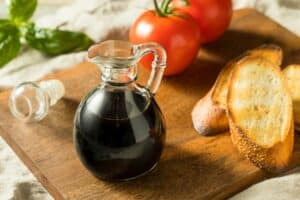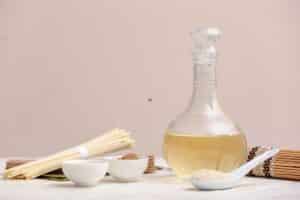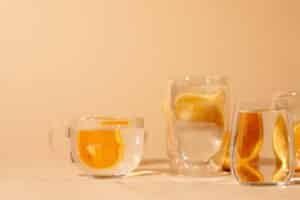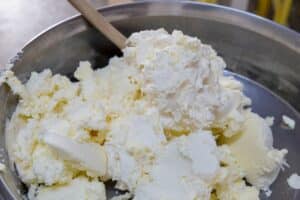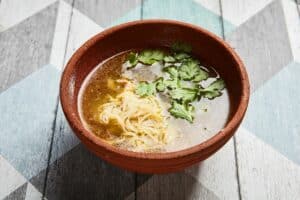Just about everyone loves pancakes, but if you lack milk or cannot drink it for health reasons, you do not have to do without pancakes. There are plenty of milk substitutes you can use to make pancakes that are as good, if not better than milk.
Each substitute for milk in pancakes brings something different to the table. Some are more nutritious than pancakes made with regular milk.
Others can affect the texture and even taste. A few require more diligent attention when they are being cooked. All are delicious if cooked properly.
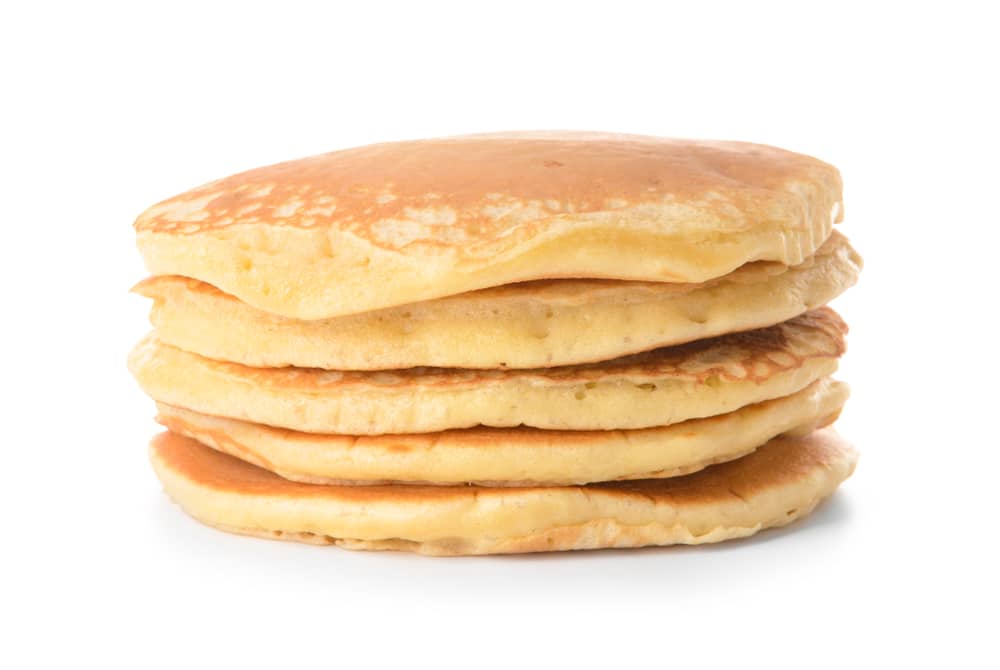
1. Applesauce
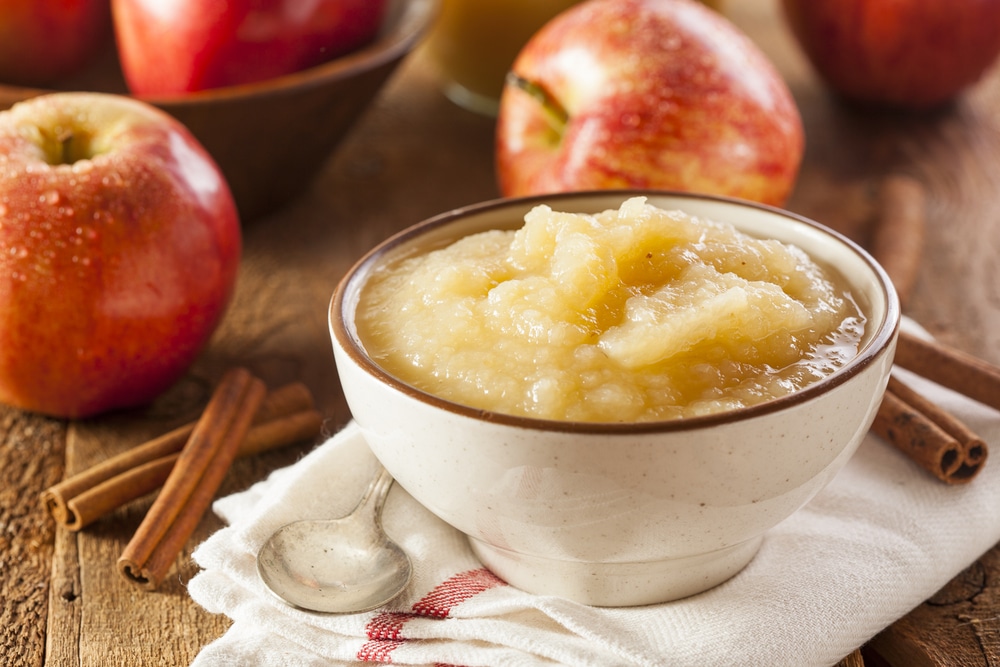
Applesauce is an excellent milk substitute. It is great for someone that is lactose intolerant and has a nut allergy. Applesauce is more nutritious than cow milk, so you get more out of your pancakes than if you just used milk.
Using applesauce can affect the texture so add applesauce when you mix your batter. Stop when the texture and thickness are close to pancakes. If you add too much and the batter becomes runny, add in more pancake mix.
You can use a 1 to 1 ratio with milk, meaning one cup of applesauce equals one cup of milk in terms of liquid and texture.
More than texture, applesauce’s major influence on pancakes is taste. Pancakes will taste slightly sweeter when you use applesauce. Applesauce flavored with cinnamon will give your pancakes a sweeter, cinnamon flavor.
The rule of thumb when using applesauce as a milk substitute is that it mixes best with batter-based dishes. That means pancakes, fried food batter, cakes, etc.
Additionally, because applesauce has fruit pulp, it will make any batter it is used in thicker. You should keep that in mind when using applesauce to make pancakes.
2. Milk Alternatives
When using anything made of nuts, you must make sure that no one eating your pancakes has a nut allergy. That said, the following types of milk substitutes would fall into this category:
- Almond milk
- Cashew milk
- Soy milk
- Coconut milk
- Oat milk
- Any other liquid substitute that advertises itself as “milk”
Each of these works on a one-to-one ratio. So, if the recipe calls for a half cup of fresh milk, you would use a half cup of soy milk, for example. The texture of the batter and pancakes may be affected by the consistency of the milk substitute you use.
After you have added in the equal amount of substitute milk as the recipe calls for fresh milk, mix the batter and add more milk as needed. Add extra milk slowly, though. Remember that you can always add more if you need it, but you cannot subtract milk from the batter once it is added.
While milk substitutes affect pancakes in diverse ways, each also has its own nutritional value. You should compare any substitute to milk to see what, if anything, the substitute is missing.
The various types of milk, for instance, may not be as rich in calcium or vitamin D, which if you are trying to increase either, may require you to take a supplement.
If you are cooking for several people, you also must be aware of any allergies they might have. People allergic to nuts, for example, should not partake in any nut substitute. Other people are allergic to soy protein.
The key is to ask anyone that might have some of your pancakes if they are allergic to any of the potential milk substitutes.
3. Condensed, Evaporated, and Powdered Milk
Sometimes the issue is not trying to avoid milk for health reasons or lactose intolerance, but just not having milk when you want to make pancakes.
Here are three milk-based products that can substitute for milk in pancakes. Each option is nutritious and started as fresh, liquid milk.
Condensed Milk
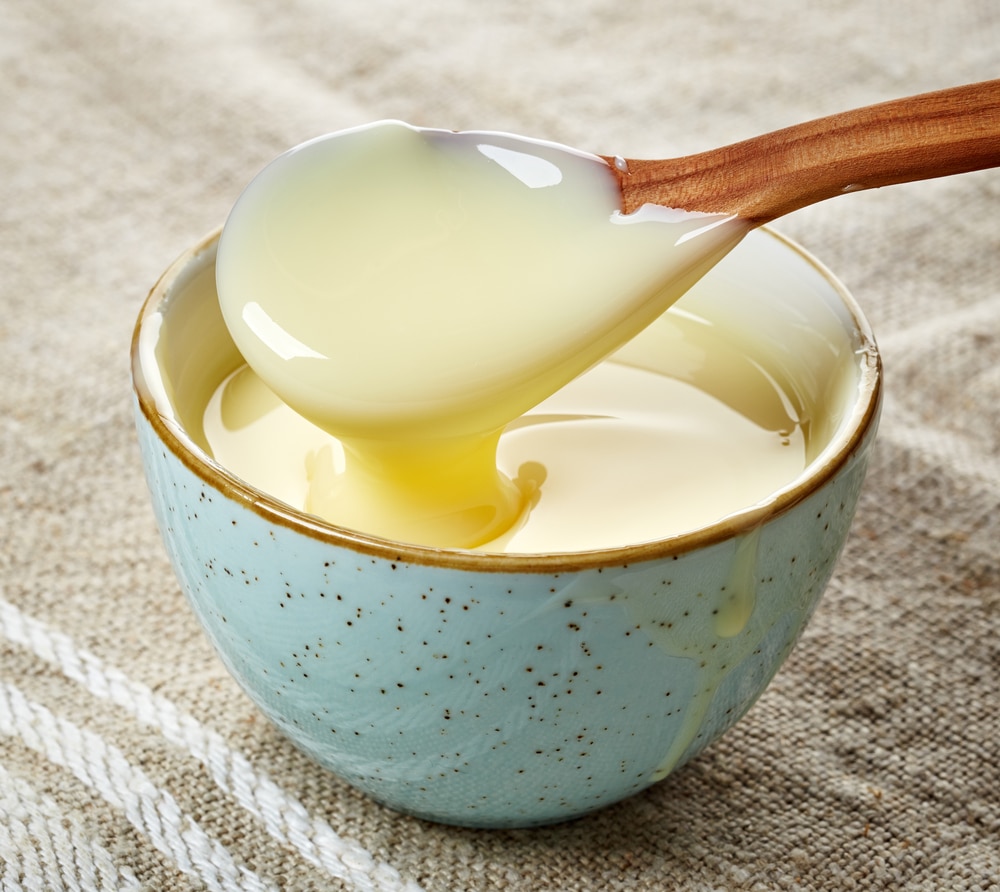
Condensed milk requires water and is milk that has been reduced by evaporation, so it is thicker. It also has sweetener added, so it is not a good substitute if you are using premixed pancake mix. If you make your own pancake mix, you need to adjust your recipe to accommodate the extra sweetness.
You need three tablespoons of milk per cup of milk. Add it in according to the directions. Once the water is added, the condensed milk will look like regular milk but will be a little bit thicker.
Unless you forego the sugar in the regular recipe, there will be a higher sugar content in your batter. This will mean that your pancakes will burn quicker, so you need to be diligent when you are cooking them and not leave them on your cooking surface for too long.
If you have too much condensed milk, you can easily preserve it by freezing. See how to freeze condensed milk.
Evaporated Milk
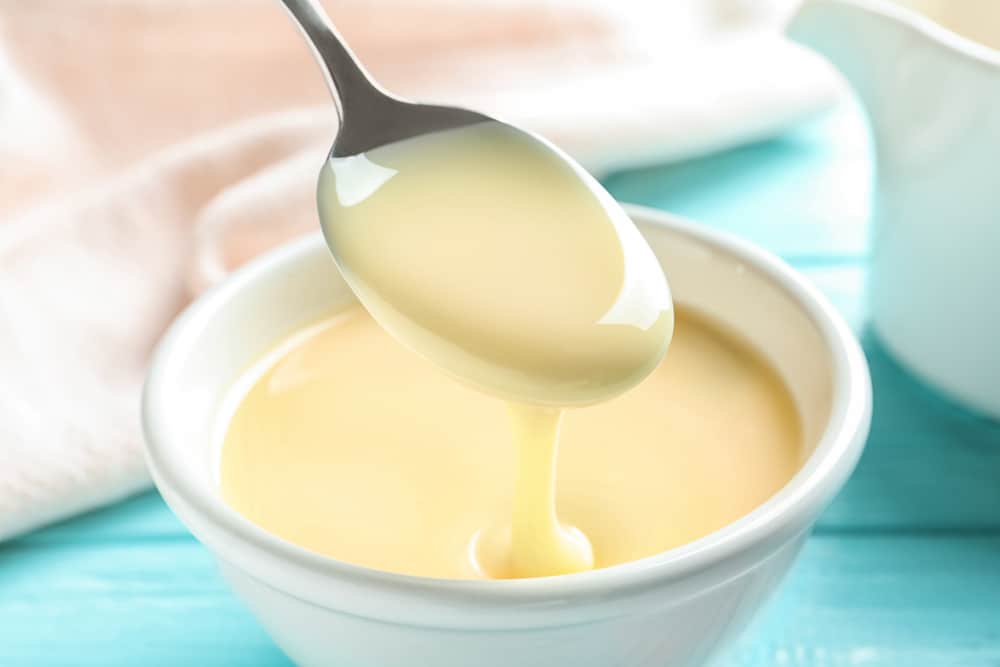
Evaporated milk is the same as condensed milk, just without the extra sweetener. Most cooks consider evaporated milk to be the best substitute whenever fresh milk is not available.
While no evaporated or condensed milk substitute will taste like fresh milk, evaporated milk comes the closest and there is no difference in terms of how it affects the texture of pancakes.
Evaporated milk works on a one-to-one conversion, meaning you add one can of evaporated milk with water per the directions and use the same amount of it as fresh milk for your pancakes.
Once you have merged the ingredients, you can cook your pancakes the same way as if you were using fresh milk.
Powdered Milk
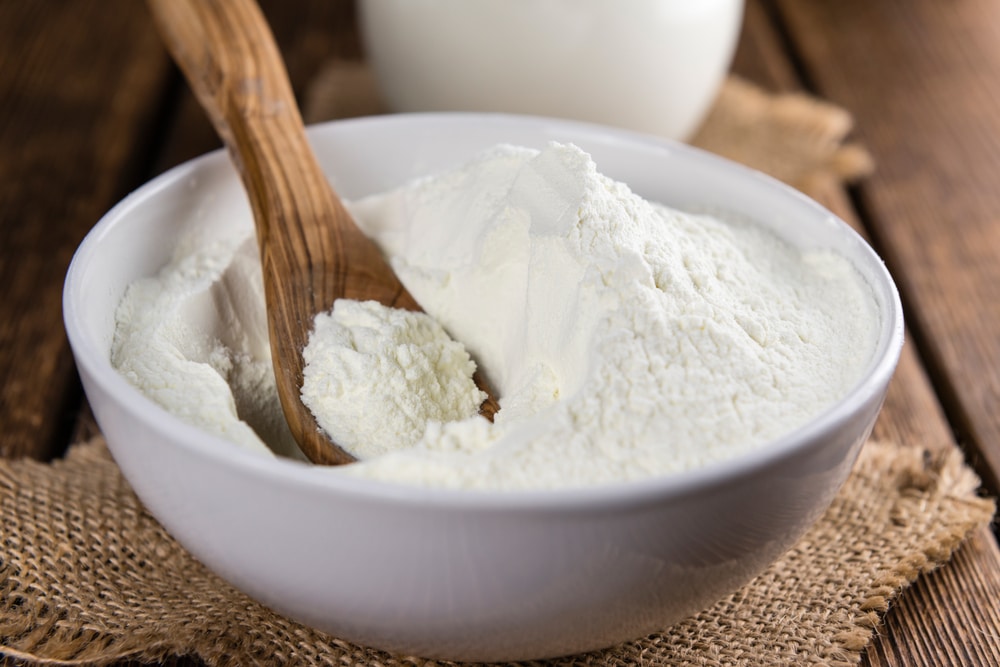
Powdered milk is exactly what it sounds like. You add water and create milk from a powder that is dehydrated milk. The milk, once restored to a liquid state, tastes remarkably similar to fresh milk.
You will need ¾ teaspoons of powdered milk per cup of fresh milk. Add water per the directions.
When making pancake batter, you will need 1 – 2 teaspoons more reconstituted milk than fresh milk required in the pancake batter recipe.
4. Sour Cream
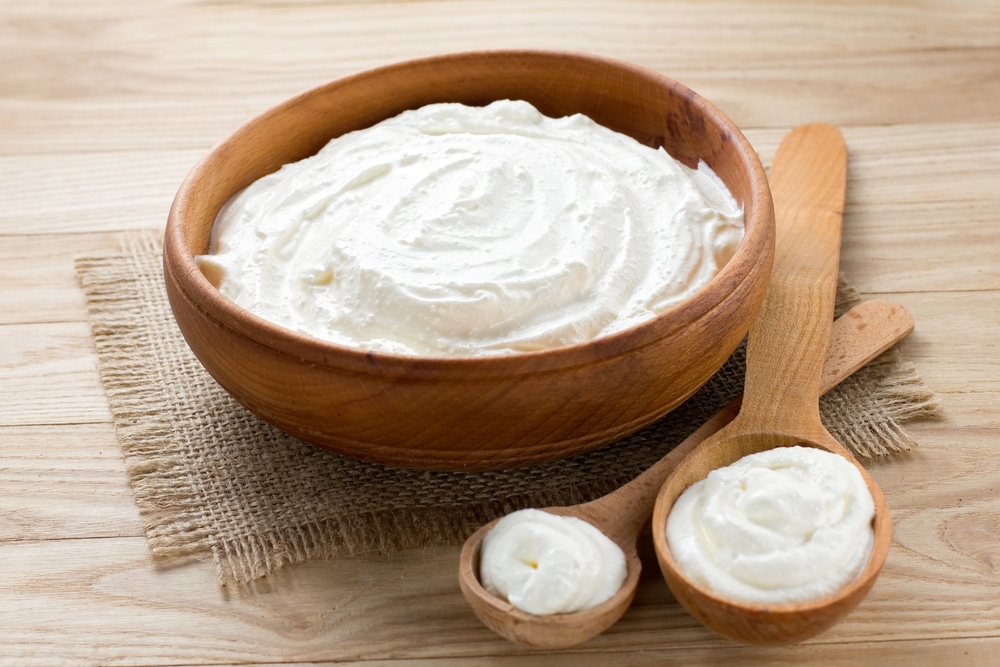
Sour cream is another substitute for milk when you do not have any available. It is not a substitute for any health reasons, like allergies. Once diluted, sour cream has the same consistency as milk and will yield the same taste and texture in pancakes.
You need five tablespoons of sour cream to equal one cup of milk. You will need to add enough water to liquefy the sour cream before you can use it. Sour cream is a fantastic substitute for milk in a pinch and blends well with pancake mix.
Start with five tablespoons and add one tablespoon of water. Check out the mixture after you have combined the sour cream and water and if it is not the consistency you want, add another tablespoon of water.
After the second tablespoon, use teaspoons to add water. This way, you will not dilute your sour cream so much it makes your batter runny.
Sour cream will not affect the taste of your pancakes, despite its natural bite. It might, however, make pancake batter a little thicker than you are used to having with milk.
The effect of the thicker batter is that it will take a little bit longer to cook. You also need to consider if anyone eating your pancakes is lactose intolerant.
If you need to store sour cream, it can freeze for up to 6 months.
5. Yogurt

Yogurt can make a great substitute for milk in pancakes. Apart from blending in well with just about any ingredients, which means pancake texture will not be affected, yogurt brings a lot of health benefits to the table.
In fact, in terms of nutrients and other benefits, yogurt is one of the healthiest milk substitutes available.
The nutrients yogurt provides include, but are not limited to:
- Calcium (1 cup gives you 49 percent of your daily recommended intake)
- B vitamins (B12 and riboflavin that are believed to help heart health
- Phosphorous (12 percent of your daily recommended intake)
- Magnesium (18 percent of your daily recommended intake)
- Multiple trace minerals (iron, zinc, copper, chromium, etc.)
Surprisingly, yogurt does not naturally contain vitamin D.
Yogurt is high in protein and provides about twelve grams per seven ounces. Your body uses protein in many different ways. One area yogurt does not help is providing your gut with probiotics because the heat during the pancake cooking process kills most bacteria off.
Remember that yogurt is dairy-based, which means someone with lactose intolerance should not eat pancakes made with yogurt. At the very least, you should warn anyone dining with you about your plans to use yogurt as a substitute for milk or other milk substitutes.
You need about six tablespoons of yogurt to substitute one cup of milk. Using pain yogurt will ensure your pancakes taste like traditional pancakes. If you are looking for a sweeter, flavored, or different version of pancakes, chocolate or vanilla yogurt will add a tang and sweetness to your pancakes without overpowering them.

